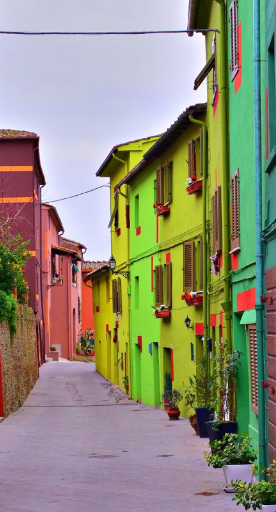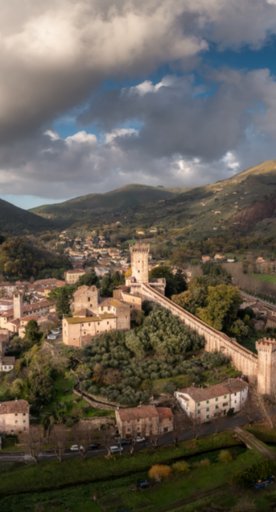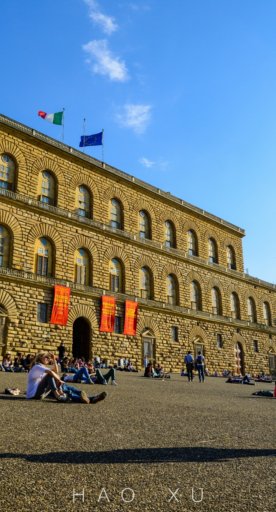
Cities and areas in Tuscany crossed by the Arno River
From Mount Falterona to Bocca d'Arno
The Arno is one of the most important rivers in central Italy and for sure one of Tuscany’s most vital natural source. The 241 kilometre-long river originates from Mount Falterona in the Casentino area. Initially it moves sothward, then turns to the west near Arezzo. The fertile valley of its middle course is called the Valdarno, then it passes through Florence, Empoli and Pisa, finally flowing into the Tyrrhenian Sea, at Marina di Pisa (precisely in Bocca d’Arno, that means "mouth of the Arno").
In the different names of places in Tuscany, the word "Arno" crops up often: this is because the river has always played a key role in the local development. Today we’re going to visit the main towns and villages along the Arno River, from the beginning to the end. During its journey the river flows through major cities such as Florence, Pisa, Empoli, Santa Croce and Pontedera.
-
1.Monte Falterona
-
2.Casentino
-
3.Valdarno
-
4.Florence
-
5.Empoli and Valdarno Inferiore
-
6.Pisa
-
7.Bocca d’Arno (Marina di Pisa)
Monte Falterona

Monte Falterona is a mountain in the Apeninnes between Tuscany and Emilia Romagna and is part of the "Casentino forests, Monte Falterona and Campigna" National Park. The Arno River springs from the southern side, at 1358 meters, in a place called “Capo d’Arno”. A plaque with some verses of Dante Alighieri (taken from the Purgotory, Canto XIV Divine Comedy) indicates the exact location of Capo d’Arno.
Casentino
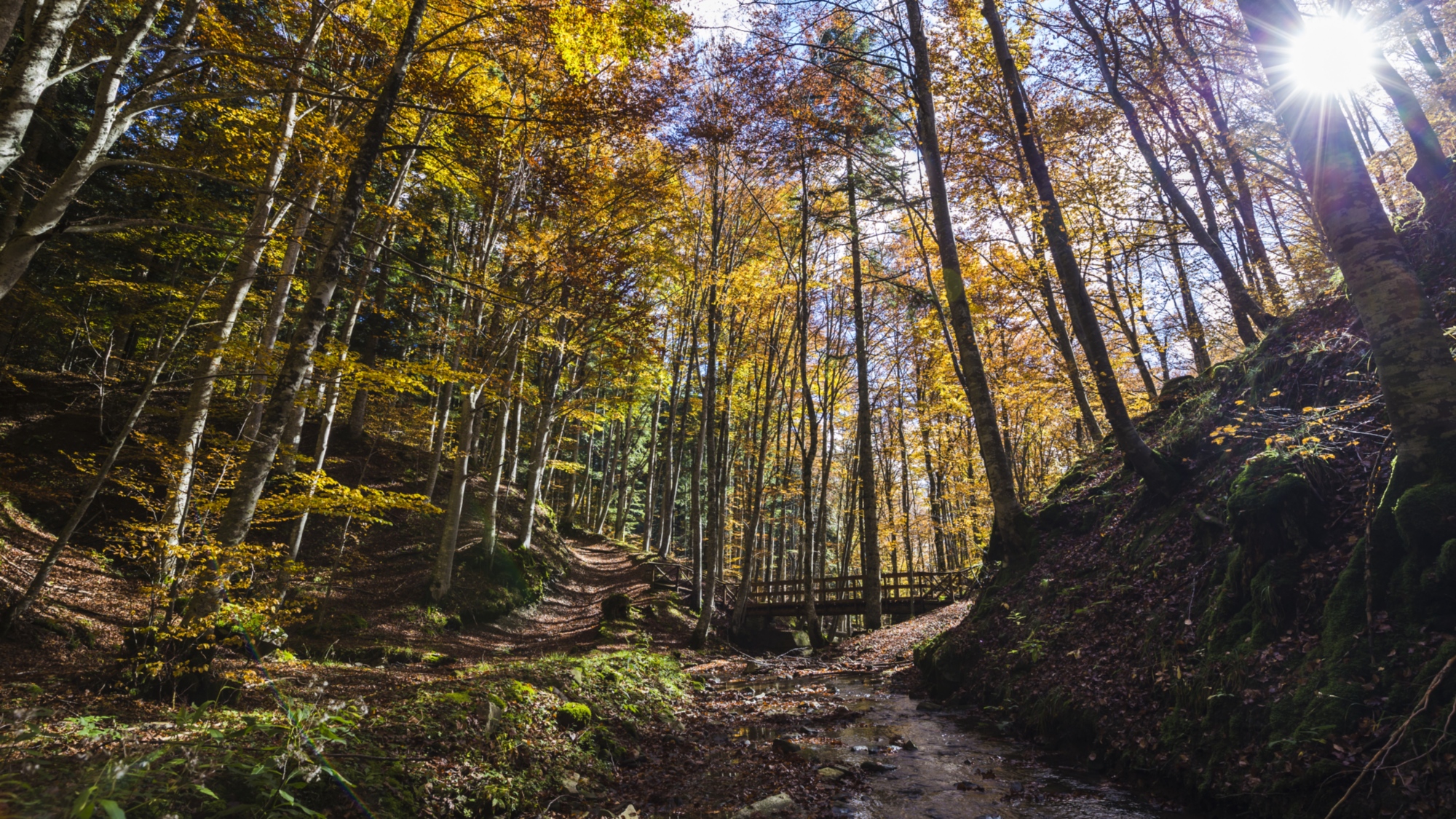
From Monte Falterona to the surroundings of Arezzo, the Arno River runs through the Casentino area in the upper valley that extends from the Appenines, flowing towards Florence. This area of the upper valley of the Arno, is green and there is a perfect balance between nature and man. The entire Casentino Valley is rich with history, art, good food, lovely castles, villages and outdoor activities to do. The main centres of this area are Poppi, elected one of the most beautiful towns in Italy (I Borghi più belli d’Italia), and Bibbiena, the main craft and industrial centre. The Casentino is a very spiritual place: St. Francis climbed La Verna and received the stigmata, and St. Romualdo founded his hermitage at Camaldoli.
Valdarno

With the name Valdarno, we indicate the area in which the Arno changes direction before Arezzo and heads north. The Valdarno can be divided in two main areas: the Valdarno Superiore from Arezzo to Florence, and the Valdarno Inferiore from Montelupo to Pisa. In this section we're talking about the Valdarno Superiore. During the Middle Ages, because of its opulence, this area was the object of brutal battles fought between the Guelphs of Florence and the Ghibellines of Arezzo. The main centres of this area are Montevarchi, San Giovanni Valdarno, Levane, Figline Valdarno, Terranuova Bracciolini, Incisa in Val d'Arno, Castelfranco di Sopra, Pian di Scò, Reggello, and Rignano sull'Arno. The Valdarno presents a remarkable variety of landscapes and a long history, evidenced by the presence of humans since the Stone Age.
Florence

The Arno River divides Florence in two parts. The Arno is strongly tied to the history of the city: it has been the source of employment as well as an entertainment venue during festivals and sporting events. Unfortunately, it has been also a source of destruction and death caused by floods (the worst episode was in November 1966). Since ancient times it has been a key transit route between the sea and the Apennines and the source of wood needed for architectural works. Between the twelfth and fourteenth centuries the Arno was extremely important in Florence’s economic development because many work sectors required water (like mills for example). The Arno passes below many bridges in Florence, which give a sense of continuity to the city. The names of the bridges from the southern part of Florence are: Ponte San Niccolò, Ponte alle Grazie, the picturesque Ponte Vecchio with its Vasari Corridor, Ponte Santa Trinita, Ponte alla Carraia, Ponte Vespucci, Ponte alla Vittoria, and finally Ponte dell’Indiano. All bridges have their own stories and characteristics and are real monuments and charming places where you can admire Florence, each time from a different perspective. Most of the bridges are reconstructions, due to the fact that Nazis destroyed them before the advancing Allied forces during World War II. On the right of the Arno you can find the Uffizi Gallery, Piazza della Signoria, Piazza Duomo; on the left hand there's the area called Oltrarno.
Empoli and Valdarno Inferiore
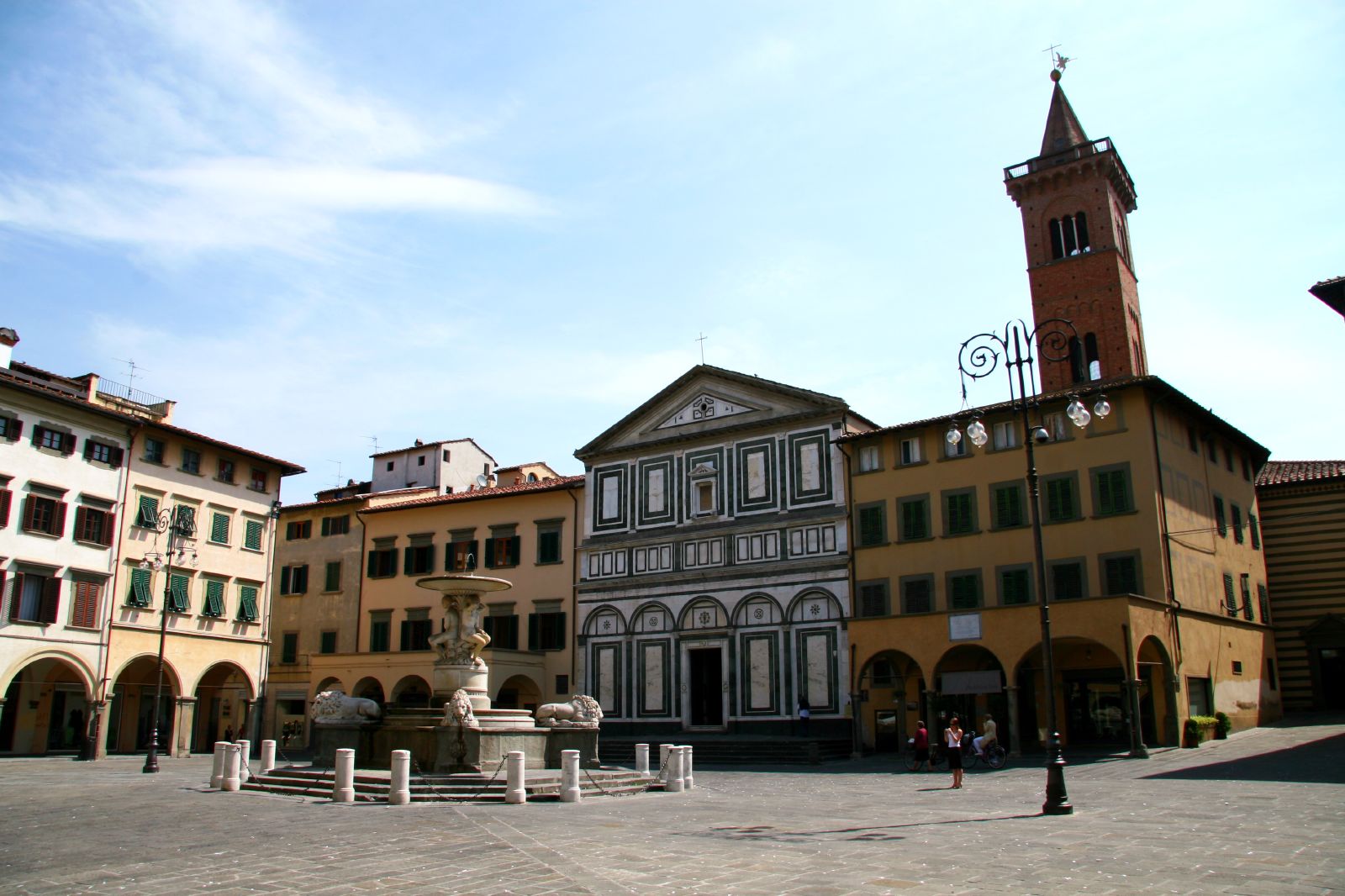
About 20 kilometres southwest of Florence, the main town we meet before Pisa is Empoli, located in a plain formed by the Arno river. The river was a very important means of communication for trade: the area was already settled even in the early Roman Empire times. Here you can learn about the main sights of Empoli. Continuing along the river we meet other major centres of the Valdarno Inferiore, such as Fucecchio, Santa Croce sull'Arno, Montopoli in Val d’Arno and Pontedera. Santa Croce sull'Arno stands on the right bank of the Arno at the convergence with the Egola River. It has a flat territory and is known worldwide for its leather industry, featuring more than 400 factories and laboratories. Between Florence and Pisa we find Montopoli in Val d’Arno, remembered by Boccaccio as the “Eminent Castle” for its powerful fortifications. The oldest part of Montopoli preserves the atmosphere of the typical medieval settlement and is home to a tower and an arch named after Castruccio Castracani.
Pisa

Just like Florence, the city of Pisa has always been influenced by the presence of the Arno river. In fact, the people living in Pisa divide the city in “tramontana” and “mezzogiorno”, respectively south and north of the Arno. The Arno River in Pisa is crossed by many bridges. From the upper course of the river to the last one before it flows into the sea, we can find: Ponte delle Bocchette, Ponte della Vittoria, Ponte della Fortezza, Ponte di Mezzo, Ponte Solferino, Ponte della Cittadella, Ponte della Ferrovia, Ponte dell’Aurelia, Ponte del CEP, and Ponte dell’autostrada A12. The most famous is probably the Count Ugolino bridge, known to everyone as Ponte di Mezzo, in a beautiful location in the city centre, connecting Piazza Garibaldi with Piazza XX Settembre, where you’ll find the Praetorian Palace, the City Hall and the Logge dei Banchi. It is the bridge on which, every June, the Gioco del Ponte (Bridge Game) takes place. Just like in Florence, the roads bordering the river are called “Lungarni”. The Lungarni riversides of Pisa were admired by many nineteenth century Italian and European writers for the beautiful urban scenery.
Bocca d’Arno (Marina di Pisa)
Bocca d'Arno is the name by which the last stretch of the Arno is commonly called, at its mouth, in Marina di Pisa. The Bocca d'Arno area is famous for its beautiful setting, which embraces the typical wooden buildings called "retoni" located on the water and against the evocative scenery of the Apuan Alps. In 2013 a port was built there, to supply the town of Marina di Pisa.
Article by Serena Puosi













